Kite Bladder Replacement: Essential Guide for Enthusiasts
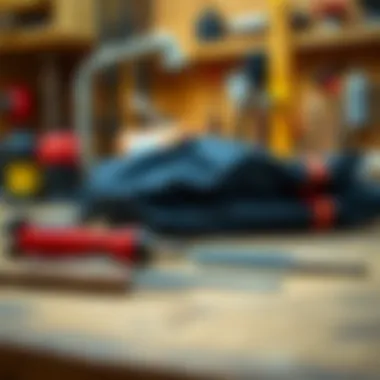
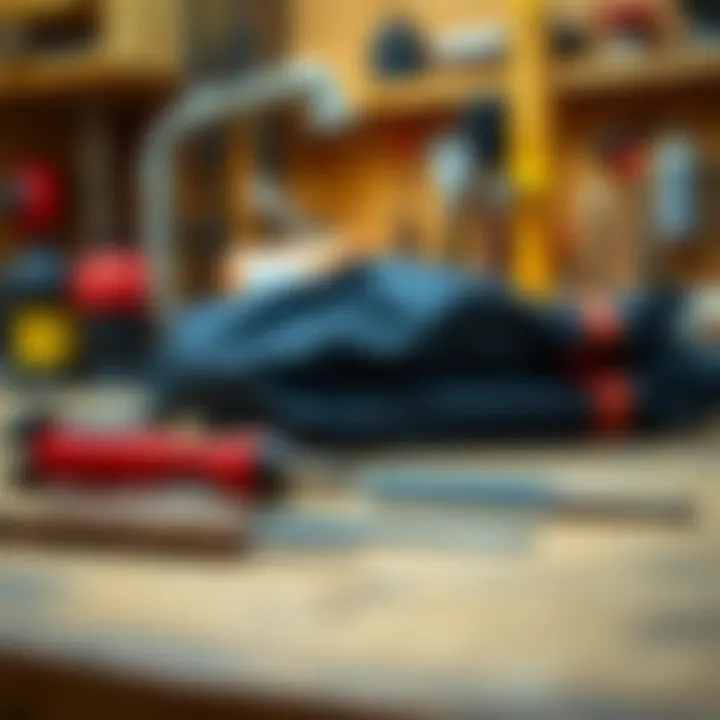
Intro
Kiteboarding is an exhilarating sport, but it comes with its unique set of challenges. One of the most critical aspects often overlooked by enthusiasts is the condition of a kite's bladder. This inflatable component does more than give your kite shape; it's crucial for maintaining performance and control during those wind-swept sessions.
But what happens when your kite bladder gets damaged? Whether it's a puncture or a slow leak, timely replacement can make all the difference. This article takes a deep dive into the nitty-gritty of kite bladder replacement, ensuring that you, as a kiteboarder, not only understand the relevance of this task but also how to execute it seamlessly.
From novice enthusiasts to seasoned pros, there’s something here for everyone. We'll cover essential methods, material choices, and some techniques to tackle common issues head-on. Want to get the most out of your gear? Stick around as we unfold the art and science of maintaining kite performance.
Gear Insights
When it comes to kiteboarding, the right gear can make or break your experience. Let's explore key elements that can elevate your time on the water.
Latest Gear Reviews
The market is constantly evolving, with brands rolling out innovations quicker than you can say, "Let’s hit the waves!" Here’s a look at a couple of kites designed with durability and performance in mind:
- Core XR8: Featuring a unique blend of agility and stability, the XR8 takes responsiveness to a whole new level, making it a favorite among advanced kiteboarders.
- Duotone Rebel: Known for its versatility, the Rebel caters well to all skill levels and performs admirably in various wind conditions. Its robust bladder ensures fewer leaks and better air retention.
These models represent just a fraction of what’s available, so it pays to keep an ear to the ground for upcoming releases and trends.
Essential Gear for Beginners
For those new to kiteboarding, selecting gear can be a daunting task. Here are some staples that every novice should consider:
- Beginner-Friendly Kite: Look for an easy-to-handle model that offers good stability, like the Naish Switch. Its forgiving nature helps in learning the ropes without too much stress.
- Harness: A comfortable harness, such as the Ion Riot, provides support without restricting movement, which is essential during those initial attempts at flight.
- Safety Leash: Never underestimate the importance of a reliable safety leash. It keeps your kite connected to you, even when things go awry. Brands like Prolimit offer robust options that won't let you down.
Arming yourself with the right equipment not only boosts confidence but also enhances your overall kiteboarding experience.
"Regular maintenance and timely replacements can mean the difference between a day of frustration and an unforgettable session on the water."
By understanding what gear works best for your skill level and objectives, you position yourself for success right off the bat.
Understanding Kite Bladders
Understanding the intricacies of kite bladders is crucial for anyone keen on kiteboarding. Kite bladders serve a fundamental role in controlling lift, stability, and maneuverability. This section aims to highlight what kite bladders are and how they function, ultimately laying the groundwork for a more detailed examination of replacement strategies and maintenance practices.
Definition of Kite Bladders
Kite bladders are inflatable compartments within a kite that provide necessary buoyancy and shape. Made from lightweight, durable materials, these bladders are typically inflated with air, allowing kites to catch the wind effectively. Without a properly functioning bladder, a kite would lose its intended shape, leading to reduced performance and potential difficulty in handling.
In simpler terms, you can think of them as the skeleton of the kite, giving it structure. They usually sit between the outer fabric and framework, creating a dynamic system that responds to varying wind conditions.
Functionality of Bladders in Kites
The functionality of kite bladders is quite remarkable, taking on several critical roles:
- Lift Generation: When a kite is inflated, the shape created by the bladder helps to harness wind energy, generating lift. This lift is what keeps the kite in the air.
- Stability Maintenance: A properly inflated bladder aids in maintaining stability by ensuring the kite’s surface remains taut and aerodynamically efficient. If the bladder is compromised, it can lead to instability in flight, causing erratic movements.
- Wind Response: Kite bladders are designed to react quickly to shifts in wind speed and direction. This responsiveness is vital for comfortable control during riding.
- Adaptation to Weather: Different kite sizes and bladder designs can adapt to various weather conditions, from light wind to strong gusts. This adaptability is especially beneficial for kiteboarders looking to push their limits in diverse environments.
In essence, understanding how kite bladders operate will provide kiteboarders with better insight into equipment maintenance and performance intricacies.
"A well-maintained bladder can make or break your kiteboarding experience; it truly is the heart of the kite!"
This knowledge can also help in recognizing when a replacement is necessary, paving the way for improved performance and enhanced enjoyment on the water.
Why Bladders Need Replacement
Understanding the importance of replacing kite bladders is like knowing the heart of your kite's operation. A kite's performance heavily relies on the integrity of its bladder. Over time, however, these bladders can sustain damage due to various factors, necessitating timely replacements. Failing to address bladder issues can lead to diminished performance and potentially ruin a good day on the water.
Common Causes of Damage
Accidental punctures
Accidental punctures are among the most common yet insidious threats to kite bladders. Whether it’s a stray sharp object or a careless moment while setting up, these little mishaps can have big consequences. The key characteristic of these punctures is their unpredictability—one moment everything seems fine, and the next, you're fighting a deflated kite.
In this article, understanding how to manage these unforeseen occurrences is essential. A puncture’s unique feature is that it often starts small; without prompt attention, however, it can exacerbate like a crack in a windshield. Repairing such damage promptly is crucial, as leaving it unattended can lead to more significant issues on the water, such as loss of control or difficulty in reclaiming your kite.
Exposure to harsh weather
Harsh weather poses another substantial risk to kite bladders. Blisters from intense heat, distortion from piercing cold, and wear from prolonged exposure to UV rays are just a few of the ways Mother Nature can wreak havoc. Kites often have to face elements that can cause deterioration, and understanding these impacts is vital to maintaining the kite’s lifespan.
The unique feature of weather-related damage is its gradual onset. Unlike punctures that can be sudden, the wear and tear from harsh conditions builds up slowly over time. This gradual deterioration often remains unnoticed until a significant drop in performance is evident. Understanding how weather impacts kite health helps enthusiasts take proactive measures to protect their gear.
Improper storage techniques
How you store a kite can be just as important as how you use it. Improper storage techniques can lead to creasing and folding, which can compromise the bladder's structure. The key element here is awareness; many kiteboarders overlook how crucial it is to store their kites properly when they aren’t in use.
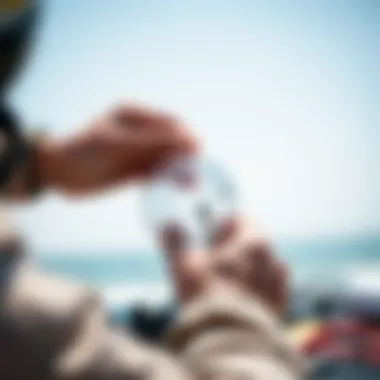
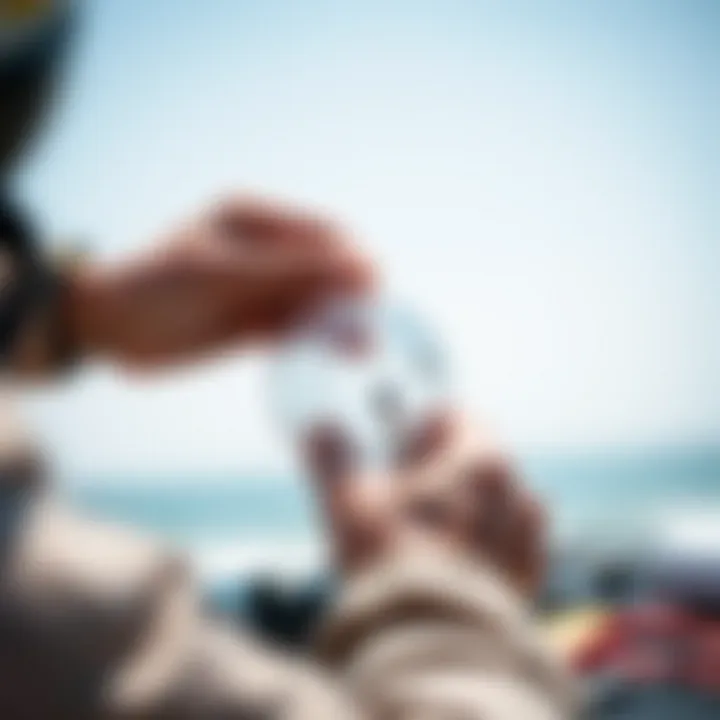
Unique to the theme of this article is the realization that storage should be more than just a tidying-up task. Kites that are thrown into an unventilated space can develop mold or mildew that can deteriorate the bladder. Taking the time to learn proper folding techniques or investing in a kite bag that allows for airflow can save enthusiasts from costly repairs in the long run.
Signs Indicating a Need for Replacement
Decreased air retention
Decreased air retention is a significant red flag when it comes to kite bladders. This condition may not present itself initially, but as you notice your kite spending more time on the ground than in the air, it’s time for a closer inspection. The primary characteristic of this issue is the inability of the bladder to hold air effectively, which hampers the kite's lift.
In terms of overall kite performance, diminished air retention affects your enjoyment on the water. The unique feature here is that the affected kite might still function marginally well under light conditions initially but can lead to frustrating experiences in higher winds. Monitoring air retention is a simple yet effective preventative measure that can save you from serious trouble in the long run.
Visible leaks
Visible leaks are perhaps the most evident sign that something's off. Whether it’s a hissing sound or that tell-tale sag, identifying a leak can be critical for performance. They usually appear in areas that experience the most stress and are often the result of small punctures or manufacturing flaws. The distinct characteristic of leaks is that they offer a clear indication that immediate action is needed.
In the grand scheme of preventing kite failures, the unique aspect of leaks is their straightforward nature; if you can see it, you can act on it. Recognizing a leak early can save a novice or seasoned kiteboarder thousands in replacement costs, not to mention numerous frustrating sessions with an underperforming kite.
Altered kite performance
Optimal kite performance isn’t merely about how it flies; it’s about responsiveness and handling. If your kite behaves oddly or doesn’t react as expected, it may signal a bladder issue. Altered kite performance is often characterized by erratic steering or sluggish speed, which can lead to safety hazards.
In understanding this topic, one of the unique features is how performance issues can stem from multiple underlying causes. Often kiteboarders concentrate solely on the bladders but might overlook other factors like line tension or current wind conditions. Being cognitive of performance discrepancies brings attention to bladder health, ensuring safer and more enjoyable rides.
Tools and Materials Needed
When talking about kite bladder replacement, one can't overlook the sheer significance of the right tools and materials. Having the proper equipment on hand not only simplifies the process but also enhances the final outcome, ensuring your kite is ready to soar high once again. Let's dive into what you'll need for a successful bladder replacement, focusing on the specific tools and materials required.
Essential Tools for Replacement
Patch kits
Patch kits are an absolute must-have when it comes to fixing and replacing your kite bladders. These kits are designed specifically to address damages, making them invaluable for kiteboarding enthusiasts.
One of their key characteristics is their versatility. Patch kits usually come with various patch sizes and adhesive options to suit different types of bladders and punctures. The unique selling point of these kits is their readiness to help at a moment’s notice. You may find yourself facing a sudden tear or puncture while out on the water, and having a reliable patch kit can mean the difference between a salvaged session and heading back to shore.
While patch kits are generally easy to use, they do have limitations. Not all kits are created equal, so it’s wise to research which ones are best suited for your specific kite model. They work best for minor damages; significant tears might require a full replacement rather than a patch.
Scissors
Scissors might seem simple, but they play a crucial role in the kite bladder replacement process. They are essential for trimming any damaged sections of your bladder before applying patches or replacing the entire bladder.
The main characteristic that makes scissors a staple tool is their precision. When working with bladder materials, you want to ensure smooth, clean cuts to avoid fraying. The feature that makes scissors particularly beneficial here is their ergonomic design, allowing for easy handling while working in tight spots.
However, not all scissors are equal, and the wrong type may not give you the clean cut you’re after. Therefore, it's recommended to opt for scissors that are sturdy and specifically designed for fabrics or plastics. This can ensure cuts are clean and maintenance is minimal.
Measuring tape
A measuring tape is an overlooked yet indispensable tool when replacing kite bladders. Accurate measurements ensure that the new bladder fits perfectly into your kite, leading to optimally balanced flight performance.
One of the primary characteristics of a good measuring tape is its flexible design, allowing it to easily conform to the contours of different kite shapes. The unique feature here is its imperial and metric markings, catering to diverse user preferences and needs.
Keep in mind that while measuring tapes are straightforward to use, improper measuring can lead to ill-fitting bladders, which in turn compromises kite performance. So, make sure to exercise care and double-check your measurements before making any new purchases.
Choosing the Right Replacement Bladder Material
Types of materials available
In the world of kite bladder replacement, choosing the right material can make a world of difference. Various materials are available, including PVC and TPU. Each has its advantages and drawbacks.
The notable characteristic of these materials is their varying degrees of weight and resistance to wear. PVC, for example, is often cheaper but may not hold up as long under rigorous use than TPU. The unique feature of TPU is its flexibility, giving you an edge when dealing with sudden impacts during kiteboarding.
On the downside, different materials may not be interchangeable across kite models, prompting careful selection based on your specific equipment requirements.
Durability considerations
When it comes to durability, it's essential to be proactive. The longevity of your bladder significantly depends on the choice of material and its robustness. A durable bladder can withstand harsh conditions and rough handling, extending the lifespan of your kite.
The characteristic of durability in bladder materials often comes down to their thickness and overall construction quality. Thicker materials may be more resistant to punctures and tears. The unique value of opting for a highly durable material is the reassurance it provides during your kiteboarding adventures, leading to peace of mind.
However, higher durability can sometimes mean added weight. Therefore, one must strike a balance between weight and toughness based on usage style.
Compatibility with specific kite models
Compatibility between new bladder materials and specific kite models is crucial for a successful replacement. Each kite frame has unique dimensions that require precise bladder sizing.
The key feature of compatibility is that many manufacturers produce customized bladders designed specifically for their kite models. This choice ensures a snug fit and optimal performance.
The downside is that choosing a bladder not tailored to your kite could lead to poor performance or even safety risks. Spending time on compatibility checks can save you a hassle down the line and ensure that your kite soars effectively.


Step-by-Step Guide to Replacement
Replacing a kite bladder is no walk in the park, but it's also not rocket science. This section breaks it down step by step, ensuring any kiteboarder, whether seasoned or just starting out, can navigate the process with ease and confidence. Each step is crucial to both understand the task at hand and to execute it properly. Being meticulous at this stage can significantly enhance your kite's performance and lifespan.
Preparing for Replacement
Assessing the damage
Assessing the damage is where it all starts. Before you dive headfirst into the replacement process, you need to take a good, hard look at the bladder itself. This step serves as an assessment tool; it tells you whether the damage is minor or something that'll make you want to toss the bladder out the window. Ignoring this can lead to bigger headaches down the line, so it's worth the time.
A key characteristic of assessing damage is the ability to spot various forms of deterioration—whether it’s a small puncture or significant wear and tear. This makes it a critical part of the replacement process, as knowing the extent of the damage can help determine whether a patch or a full replacement is necessary. One unique feature of this assessment is that it can serve as a learning experience. You get to identify common problems and develop skills to spot similar issues in your other kites.
Gathering tools
Once you know what you're dealing with, it's tool time. Gathering tools is not just about finding what’s lying around the garage; it’s a strategic move that sets the stage for a smooth operation. Essential tools like patch kits, scissors, and a measuring tape will all come into play here.
This preparation is beneficial because having your tools at hand reduces time wasted rummaging through a cluttered workspace. The unique feature of this step is that it provides a sense of readiness and boosts confidence. On the downside, if you forget something crucial, it could turn a simple task into an all-day ordeal.
Setting up a workspace
Now that you’ve assessed the damage and gathered your tools, it’s time to set up a workspace. This step cannot be understated. A clean, organized environment allows you to focus on the task without distractions. Consider a well-lit area where you have enough space to move around and lay out all your tools and materials.
The key characteristic here is organization; when everything is in its place, you eliminate the chaos that could lead to mistakes. Setting up a workspace is a beneficial move because it emphasizes safety and efficiency. A notable downside could be that some may find it tedious to prepare, but trust me, it’s worth it for the ease it brings.
Removing the Old Bladder
Deflating the kite
Before you can swap out the old bladder, it’s time to deflate the kite. This is an easy, yet vital, initial step to ensure you can handle the kite safely and efficiently. Deflating the kite ensures you have a manageable piece of equipment to work on. Keeping it inflated while trying to fix it would be like trying to do surgery on a live patient; it's just not going to work out.
This step is beneficial as it makes maneuvering the kite simpler. One downside, however, is that failing to deflate properly could leave residual pressure, making it an awkward go-to when you start detaching.
Accessing the bladder
Now that you’ve successfully deflated your kite, it’s time to get down to business by accessing the bladder. This step is often where people feel daunted, but it doesn’t have to be a scary venture. You’ll find that most kites have a well-defined seam or opening, usually featuring Velcro or a zipper.
The key characteristic of accessing the bladder is its requirement for a bit of technique; knowing where to pull and what to look for helps you avoid tearing more than necessary. Successfully accessing the bladder cannot be overstated when it comes to achieving a clean removal. However, be careful here; hasty moves may damage other parts of your kite, costing you more than just time.
Careful detachment techniques
The art of careful detachment can make or break your DIY experience. You’ll want to be gentle yet firm while detaching the old bladder from the kite frame. Navigating around the seams without damaging the kite itself is crucial. Each kite design may have its quirks that’ll require a tailored approach.
What’s beneficial here is that mastering this technique can save you from future mishaps. One unique feature of this technique is that it allows you to become more familiar with the mechanics of your kite. On the downside, it could take a bit of practice to get it right, but patience is key.
Installing the New Bladder
Inflating and checking fit
With the old bladder out of the picture, it’s time for the new one to shine. Inflating and checking fit is a pivotal moment in the replacement process. You’ll want to pump some air into the new bladder while monitoring for any fitting issues. This is where you can identify if you've chosen a bladder that fits snugly and doesn't create tension against the seams.
The importance of this step is that it allows you to troubleshoot immediately if something seems off. The advantage here is that you can make adjustments before sealing everything up, saving you headaches later on. On the flip side, rushing through this step can lead to significant mistakes that can be costly in both time and materials.
Sealing and securing
Once you've confirmed a proper fit, sealing and securing the bladder is your next course of action. This is an exceptionally critical part of the replacement process. Whether it's using adhesive or sealant, ensuring the bladder is sealed tightly prevents air leaks that could ruin your day out on the water.
The key characteristic here is the need for thoroughness; if you skip this part, you might find yourself refilling air mid-session, and that’s a hassle nobody wants. A unique feature of this step is that it encourages precision and attention to detail, fundamentally enhancing your capabilities as a kiteboarder. However, inadequate sealing can quickly lead to regret and potentially ruin a great kite.
Final adjustments
As you near the finish line, making final adjustments is crucial. This step involves checking every inch to ensure that everything is where it should be before putting the kite back into action. Checking for even distribution of air, making sure there are no leaks, and adjusting lines if necessary can make all the difference to your next ride.
The importance of this step is that it helps maintain the balance of your kite, essential for effective performance. The unique feature here is that these adjustments can often make the difference between a great day on the water and a frustrating one. However, taking too long can lead to unnecessary doubts and delays, so find that balance.
Post-Replacement Care
Once a kite bladder has been replaced, the journey doesn’t end there. Proper post-replacement care is vital for ensuring the longevity and reliability of your kite. Neglecting this step can lead to premature wear and tear, potentially cutting your time on the water short. Understanding how to maintain your bladder after you’ve gone through the effort of replacing it will not just keep your gear in top shape, but also enhance the overall performance of your kite.
Inflation Techniques
Getting the inflation of your new bladder just right is crucial. A well-inflated bladder maintains kite shape and responsiveness in the air. Here are some key points to consider during inflation:
- Gradual Inflation: Rather than going full-throttle right away, start inflating your bladder gradually. This allows for any irregularities in the bladder's shape to settle, ensuring even distribution of air.
- Check for Twists: As you inflate, keep an eye out for any twists or kinks. A twisted bladder can lead to unforeseen pressure points, affecting the kite's stability.
- Use a Pressure Gauge: If available, use a pressure gauge to monitor the air pressure inside the bladder. This ensures you won’t over-inflate, which can stretch the material and compromise its integrity.
By taking a thoughtful approach to inflation, you set a strong foundation for your kite’s performance.
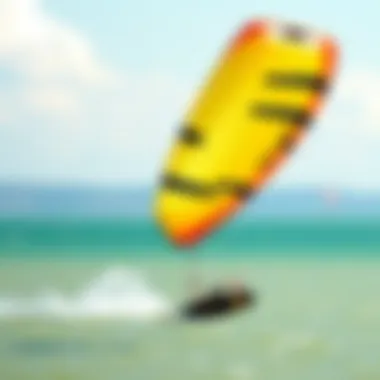

Routine Checks for Air Retention
Once your bladder is in action, it’s smart to keep an eye on its air retention. Regular checks can help catch potential problems before they escalate. Here’s what to do:
- Initial Check After Inflation: After inflating your bladder for the first time, note how it holds air over a few hours. If you notice any sagging or deflation, it’s an indication of issues that need to be addressed.
- Periodic Checks: Schedule periodic checks, especially before heading out for a session. A simple squeeze test can reveal if there’s any significant air loss.
- Listen for Hissing Sounds: Any faint hissing sound during inflation can indicate a small leak. Pay attention and be prepared to take action as needed.
Keeping your finger on the pulse with these checks can save you from bigger headaches later on.
Storing Your Kite Safely
How and where you store your kite makes a fundamental difference in its longevity. Here are essential tips for safe storage:
- Dry Before Storing: Ensure your kite is completely dry to avoid mold and mildew development. A damp kite left in storage can lead to irreversible damage.
- Avoid Direct Sunlight: Store your kite in a shaded area, as prolonged exposure to direct sunlight can weaken the bladder material.
- Utilize a Kite Bag: Always use a kite bag to store your kite, keeping it protected from dust and potential punctures. A cushioned bag helps avoid unnecessary pressure on the wings.
By following these straightforward storage techniques, you can ensure your kite bladder stays healthy and ready for your next adventure.
Regular post-replacement care prevents future mishaps and extends the life of your kite bladder. Invest the time now for consistent performance on the water.
Cost Considerations
When delving into kite bladder replacement, it’s crucial to understand the cost aspects involved. Financial planning is not just about how much you spend on the replacement materials; it extends to both the options available—whether you decide to undertake the task yourself or hire a professional. Each choice has its own set of advantages and implications that can significantly influence both your wallet and your kite's performance.
Evaluating DIY vs. Professional Replacement
Choosing between doing it yourself and hiring a pro isn’t always cut and dried. Many kite enthusiasts relish the idea of getting their hands dirty, but there are factors to weigh.
- Skill Level: If you have a knack for repairs and have previously tackled similar tasks, going the DIY route may save you a pretty penny. The satisfaction of accomplishing a task can also add to the kiteboarding experience. However, if you're unsure about your skills, the potential for mistakes could end up costing more down the line.
- Time Commitment: Replacing a bladder requires both time and patience. While a professional may finish the job in a fraction of the time, that expedited service comes with a price tag. Compare the hours you can dedicate to the task against your need for immediate kite use.
- Quality of Outcome: There's something to be said about years of experience. Professionals tend to have refined techniques that ensure a watertight seal and proper fit. On the flip side, crafting a personal repair might provide a sense of education and connection to your gear. But, if it fails mid-session, the cost in enjoyment can outweigh initial savings.
Budgeting for Replacement Materials
Once you’ve made a decision on how you approach the replacement, the next logical step is budgeting for the materials.
- Type of Material: Kite bladders come in various materials, each with its associated costs. While some materials may be more affordable, they may not offer the longevity needed for regular users. Researching options like TPU, PVC, and others can help you find the balance between affordability and durability.
- Patch Kits vs. Full Bladders: You might consider whether a full bladder replacement is necessary or if a simple patch using a kit could suffice. Patch kits are usually less expensive and can even extend the life of the original bladder. However, if the damage is extensive, investing in a full replacement might be the wiser choice in the long run.
- Additional Tools: Don’t forget to factor in any tools you might need. If the armor of duct tape isn’t sufficient, additional tools may create an unexpected bump in your budget. Items like scissors, adhesives, or measuring tapes should be included in your financial forecast.
Understanding these costs ahead of time can set the stage for a smoother replacement process and help you avoid financial surprises. The money you allocate wisely now can ultimately enhance your kiteboarding experience and keep your gear functioning at its best.
"A stitch in time saves nine, especially when it comes to the gear that carries you across water and air."
For further reading on kite maintenance and repairs, you may visit useful resources on Wikipedia, or find community discussions on platforms like Reddit.
With a solid understanding of both costs and options available to you, replacements can become just another part of your kiteboarding adventure.
Preventive Measures
To keep your kite performance at its peak, integrating preventive measures is not just smart; it’s vital. Regular upkeep can save you a bundle in replacement costs and ensure your kite remains fly-ready. By identifying potential threats before they wreak havoc, kite enthusiasts can prolong the life of their gear and enhance their time on the water.
Regular Maintenance Tips
Kite maintenance might sound like a chore, but it’s a walk in the park with the right approach. Here are some effective tips to keep your kite in shipshape:
- Thorough Cleaning: Make it a habit to rinse your kite after each outing. Sand, saltwater, and dirt can create wear and tear over time. Use fresh water with a soft cloth to wipe away any residues.
- Inspection Before Use: Examine your kite thoroughly for cracks, frays, or any unusual wear and tear. Pay special attention to stitching and attachment points, as these areas often bear the brunt of stress. Spotting issues early can prevent bigger headaches down the line.
- Proper Inflation: Ensure your kite bladders are inflated correctly. Over-inflation or under-inflation can lead to performance issues or even damage.
- Store Correctly: When not in use, store your kite in a cool, dry place. Avoid leaving it in direct sunlight for long periods, as UV rays can degrade materials significantly. Incorporate a bag or case to keep it safe from dirt and puncture risks.
These strategies may seem simple, yet their impact on your kite’s longevity can be immense.
Factors to Avoid
While implementing preventive measures, it’s crucial to recognize specific harmful practices that can lead to premature wear or failure:
- Ignoring Minor Damage: It’s tempting to disregard small tears or leaks, waiting until they become significant problems. Addressing these issues promptly can save you from a greater hassle and expense down the road.
- Using Unqualified Repair Products: Opt for high-quality patches and repair kits made specifically for kite materials. Trusting subpar products might bring short-term solutions but lead to longer-term failures.
- Overloading Your Kite: This applies not just to weight but also the conditions. Using your kite in extreme winds beyond its specified range can compromise its integrity, making it more susceptible to damage.
- Neglecting Safety Gear: To truly stay out of harm's way, always opt for protective gear like harnesses and helmets when kiteboarding. Accidents can occur even with the best-maintained equipment and having the right safety measures is essential.
Being aware of these pitfalls will help kiteboarders maintain their gear better and enjoy their sessions more confidently.
"An ounce of prevention is worth a pound of cure."
By proactively engaging in maintenance tasks and avoiding harmful practices, kite enthusiasts will enjoy consistent performance, save on replacements, and harness the thrill of every thrilling ride on the water.
End
In wrapping up the discussion, it’s pivotal to acknowledge how crucial kite bladder maintenance is for any kiteboarder. Maintaining the integrity of your kite’s bladder ensures not just longevity of the kite but also enhances overall performance on the water. A well-functioning bladder plays a significant role in maintaining optimal air pressure, which is vital for those thrilling moments as you ride the waves. Ignoring this simple fact can lead to disappointing outings, even with the most well-designed kites.
The Importance of Kite Bladder Maintenance
Without a doubt, the importance of kite bladder maintenance cannot be overstressed. Think of it this way: a kite, much like a predictable partner in dance, requires a certain level of compatibility and care for a seamless experience. Regular checks for leaks and air retention save you from the havoc of sudden bursts or, worse, catastrophic failures during peak operational moments. By adhering to a consistent maintenance schedule, kiteboarders can catch small issues before they escalate into more significant headaches. After all, nobody wants their kite to feel like a punctured balloon mid-air!
Signs of wear and tear might not always be obvious, but skimming through your kite's bladder for any itty-bitty punctures or damage can go a long way. Even simple practices, such as rinsing your kite with freshwater after a saltwater session, can make an impact in reducing wear. Thus, investing a mere fraction of your time into maintenance yields substantial dividends when you're out on the water.
Encouragement to Act
Now that you’re armed with knowledge about the significance of kite bladder maintenance, it’s time to act. Don’t wait until you’re staring at a deflated kite at the beach to start thinking about replacement! Go ahead and set aside some time to assess your gear. Remember, the sunset doesn’t wait, and neither should you.
Consider integrating regular checks into your routine, keeping your tools at the ready, and possibly even learning the ropes of bladder replacement yourself. Hence, every effort, no matter how small, contributes to a better kiteboarding experience. So, roll up those sleeves and get down to it; the sky’s the limit when you take care of your kite like it deserves!
Taking preventive measures today will ensure that you are hitting those waves with confidence tomorrow.















